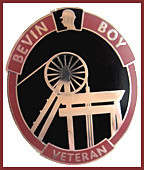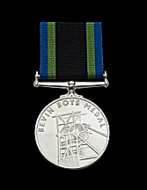
Bevin Boys Training Centres
Centres were established at all the main coalfields where there was a labour shortage and were sited either at disused pits adaptable for training or at production pits where a training area could be segregated.
Eleven pits were finally selected:-
NORTH MIDLANDS REGION
Creswell Colliery, Derbyshire.
MIDLANDS REGION
Haunchwood Colliery, Nuneaton, Warwickshire.*
NORTH WESTERN REGION
Newton Colliery, Clifton, Lancashire.*
NORTH EASTERN REGION
Askern Main Colliery, Doncaster, Yorkshire.
Prince of Wales Colliery, Pontefract, Yorkshire.
Birley Colliery (East Pit), Woodhouse, Yorkshire.*
NORTHERN REGION
Morrison Colliery, Southmoor, Durham.
Horden Colliery, Durham.*
Cromlington Lamb Colliery, Northumberland.
SCOTLAND REGION
Newcockhall Colliery, Fife.
WALES REGION
Oakdale Colliery, Monmouthshire.
Collieries marked * were opened by the end of 1943.
The eleven centres had each from 280 to 520 places.
Training was given in transport and haulage of coal.
In South Wales, where men were subsequently employed as assistants in or about the coal face, on repair work and underground haulage, the training was suitably varied.
Training time was apportioned, approximately as follows:
Physical training - 25%
Class room work/ - 25%
visits to mines
Practical surface - 20%
training
Underground - 30%
training
The training week was 44 hours.
The weekly wage rate payable to trainees during Stage A training (general knowledge and background to coalmining operating) was the national minimum rate for surface workers in the industry.
This was:-
At age 17 - 39/6.
17.5 - 41/6.
18 - 44/-
18.5 - 46/-
19 - 48/-
19.5 - 50/6.
20 - 53/-
20.5 - 55/-
21 - 78/-
Stage A were, however, raised from 22 January 1944 to:-
At age 17 - 45/-
17.5 - 47/6.
18 - 60/-
19 - 65/-
20 - 70/-
21 - 90/-
Durining Stage B training (or a fortnight's duration at designated pit) the men received the wage appropriate to the district for the occupation in which they were employed.


